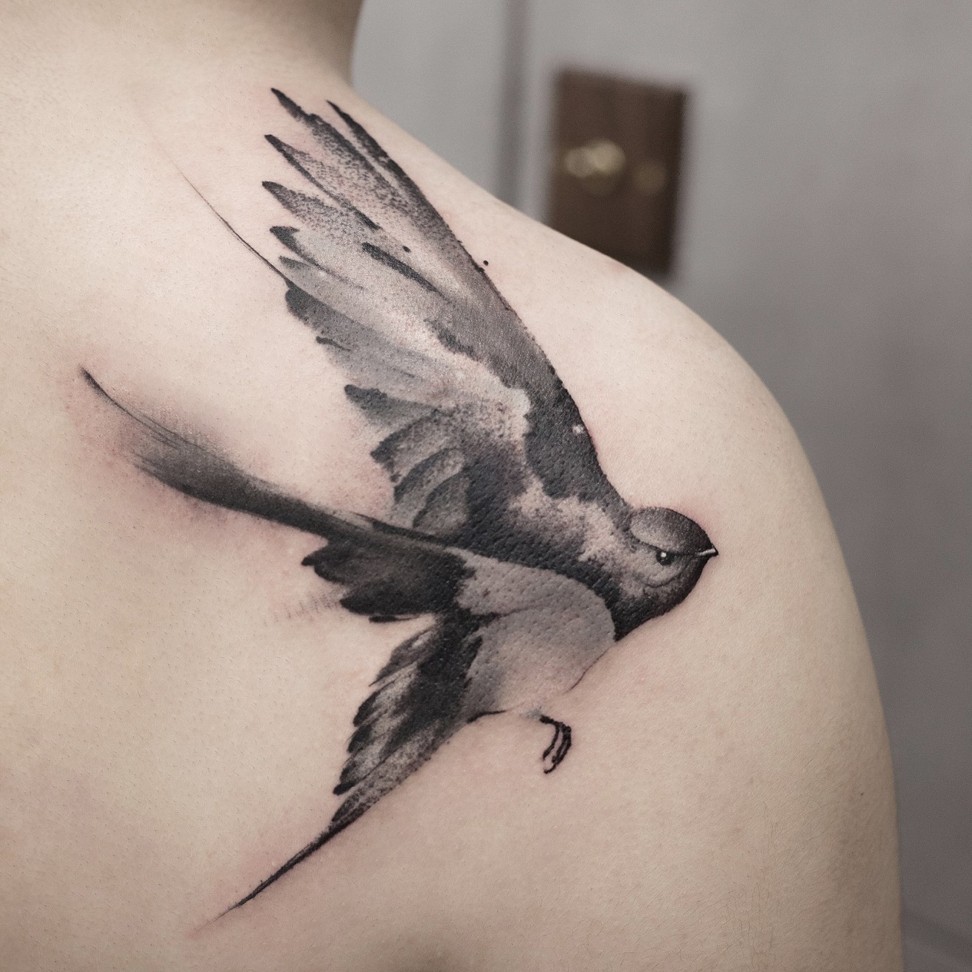
“I want people to know that traditional Chinese landscapes, still-life paintings and portraits can also be tattoos,” says Beijing-based tattoo artist Chen Jie.
Although still largely taboo, tattoos have become increasingly popular in China.
While styles from abroad such as old school and new school — characterised by hard lines and bold colours — were once the trend, a distinctly Chinese aesthetic, inspired by traditional watercolour paintings, is gaining ground.
Chen is one of many tattoo artists in China turning traditional watercolour paintings known as shuimohua into skin art.
“I started doing this style by chance,” she says. “We had a watercolour painting of peonies at home, and I told myself that when I was skilled enough, I’d do watercolour tattoos.”
Compared to more conventional styles, watercolour tattoos require greater precision and different techniques.
The challenge is achieving the faded look of a watercolour painting.

“For regular tattoos, you first draw the outline and then fill in the colours,” Chen says. “But Chinese watercolour tattoos don’t have outlines. You have to ink it slowly, bit by bit from bottom to top.”
The process is laborious and requires two types of guns: one that acts as a pen to draw the bold lines and another to act as a paintbrush injecting faded colours.

“Doing watercolours on the body and on paper is essentially the same,” Chen says. “On paper, you need to dilute the ink to get lighter colours and achieve that faded effect.
“It’s the same on skin. We have dark colours, midtones and light colours, and we have to fade them gradually.”

Her style has resonated with an audience at home that still largely views tattoos as an element of underground culture.
“I think this traditional Chinese watercolour style is more palatable to Chinese people,” says customer Song Jian, while taking a break from getting a tattoo at Chen’s shop, “because it’s very unique and more distinct than old-school and new-school tattoos.”
Chen hopes her style will help tattoos gain greater acceptance in China. Already, she has seen more local customers than she did 10 years ago. “Now, if I count them, 70 per cent are Chinese,” she says.
And she notices parents embracing skin art.
She recalls a woman getting a tattoo at her shop and showing it to her mother.
“When she saw this tattoo that looked like a really beautiful painting, the mother was so impressed that after one or two weeks, she came back to get a tattoo herself,” she says.
This article was originally published on Goldthread . Follow Goldthread on Facebook, YouTube and Instagram for more stories about Chinese culture.







